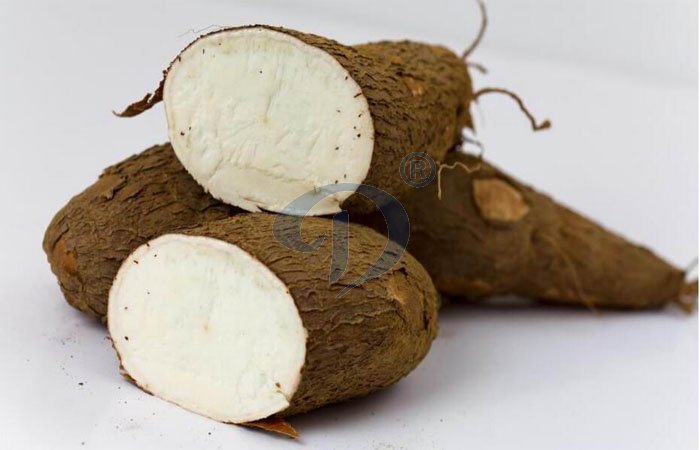Quality control of cassava products

Cassava
Quality control of cassava products
In the processing of cassava, questions naturally arise regarding efficiency and output; moreover, in selling the product the determination of quality becomes important. These problems can only be resolved by qualitative and quantitative study of the composition of the raw materials and the properties of the finished products. The financial return, especially in large factories, will depend to a certain degree on such control analyses of cassava products, which in a way are actually part of the processing itself.
Analysis of basic materials
The two important basic materials requiring analysis are the cassava roots and the water used in cassava processing. The best practical qualitative test of these materials consists in reproducing the whole process on a small scale and judging the resulting flour by comparing it with a standard sample or by analysing it according to the methods described farther on. In fact, for judging the suitability of the water available, small-scale processing is the only test of practical value.
Apart from this, since cassava starch is the substance to be isolated, a determination of the starch content in both the fresh roots and the pulp remaining after rasping and wet-screening is necessary for control of the efficiency of the process and in particular for determination of the rasping effect.
Finally, tests for the presence of hydrocyanic acid are necessary owing to the important food uses of cassava products.
A random sample of, say, 10 kg of cassava is thoroughly washed to remove the cork layer; then either the whole or the peeled roots are grated or ground. The pulp is washed out over 50-mesh bronze gauze and the flour milk obtained over 260-mesh gauze. When the suspension reaches 3º Brix (approximately 35 g of dry starch per litre), it is left to settle for four hours. The top liquid is then decanted, and water is added to the settled starch to make a slurry of 10° Brix, which is strained over 260-mesh gauze and left to settle for the second time. After decanting, the starch is mixed with water to a thick suspension (45° Brix) and filtered on a Buchner funnel under vacuum. The moist starch is dried in an oven, preferably in circulating air, commencing at a temperature of 50°C, and concluding at 60°C.
The dried starch is sieved through silk before examination.
Leave a message
- WhatsApp:
+8613526615783
- Email:
sales@doinggroup.com
- Tel:
0086 135 2661 5783
- Phone:
0086 371 5677 1822
- Skype:
elina881130
- Address:
No.133 Yaozhai Road, Jinshui District, Zhengzhou City, Henan Province, China
-
 Cassava chips processing machine shipped to Nigeria
Cassava chips processing machine shipped to Nigeria
-
 Factors affecting the price of cassava processing equipment
Factors affecting the price of cassava processing equipment
-
 How to starct cassava production and processing business in Nigeria ?
How to starct cassava production and processing business in Nigeria ?
-
 DOING cassava starch production line successfully delivered to Nigeria
DOING cassava starch production line successfully delivered to Nigeria
-
 Cassava peeling machine shipped to Nigeria
Cassava peeling machine shipped to Nigeria
-
 What are the advantages of automatic starch production line ?
What are the advantages of automatic starch production line ?
-
 Garri processing machines and their prices
Garri processing machines and their prices
-
 New cassava slicer machine are ready to ship to Nigeria
New cassava slicer machine are ready to ship to Nigeria
-
 How profitable is garri processing business in nigeria ?
How profitable is garri processing business in nigeria ?
-
 Factors affecting the price of garri processing machine
Factors affecting the price of garri processing machine
-
 What is high quality cassava flour, how to produce high quality cassava flour ?
What is high quality cassava flour, how to produce high quality cassava flour ?
-
 How to process cassava into cassava chips ?
How to process cassava into cassava chips ?
-
 Cassava starch manufacturing process
Cassava starch manufacturing process
-
 How to maintain cassava starch processing equipment ?
How to maintain cassava starch processing equipment ?
-
 How to extract cassava starch ?
How to extract cassava starch ?
-
 How to make cassasva starch?
How to make cassasva starch?
-
 Water, electricity, steam and land deploy in starch processing plant
Water, electricity, steam and land deploy in starch processing plant
-
 How profitable is cassava starch made?
How profitable is cassava starch made?
Leave a message

Tel/Whatsapp:
+8613526615783



